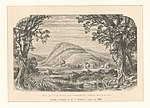Prospect Park Zoo

The Prospect Park Zoo is a 12-acre (4.9 ha) zoo located off Flatbush Avenue on the eastern side of Prospect Park, Brooklyn, New York City. As of 2016, the zoo houses 864 animals representing about 176 species, and as of 2007, it averages 300,000 visitors annually. The Prospect Park Zoo is operated by the Wildlife Conservation Society (WCS). In conjunction with the Prospect Park Zoo's operations, the WCS offers children's educational programs, is engaged in restoration of endangered species populations, runs a wildlife theater, and reaches out to the local community through volunteer programs. Its precursor, the Menagerie, opened in 1890. The present facility first opened as a city zoo on July 3, 1935, and was part of a larger revitalization program of city parks, playgrounds and zoos initiated in 1934 by Parks Commissioner Robert Moses. It was built, in large part, through Civil Works Administration and Works Progress Administration (WPA) labor and funding.After 53 years of operation as a city zoo run by the New York City Department of Parks and Recreation, Prospect Park Zoo, also colloquially known as "Brooklyn Zoo", closed in June 1988 for reconstruction. The closure signaled the start of a five-year, $37 million renovation program that, save for the exteriors of the 1930s-era buildings, completely replaced the zoo. It was rededicated on October 5, 1993, as the Prospect Park Wildlife Conservation Center, as part of a system of four zoos and one aquarium managed by the WCS, all of which are accredited by the Association of Zoos and Aquariums (AZA).
Excerpt from the Wikipedia article Prospect Park Zoo (License: CC BY-SA 3.0, Authors, Images).Prospect Park Zoo
Flatbush Avenue, New York Brooklyn
Geographical coordinates (GPS) Address Website External links Nearby Places Show on map
Geographical coordinates (GPS)
| Latitude | Longitude |
|---|---|
| N 40.665833333333 ° | E -73.964444444444 ° |
Address
Prospect Park Zoo
Flatbush Avenue 450
11225 New York, Brooklyn
New York, United States
Open on Google Maps










